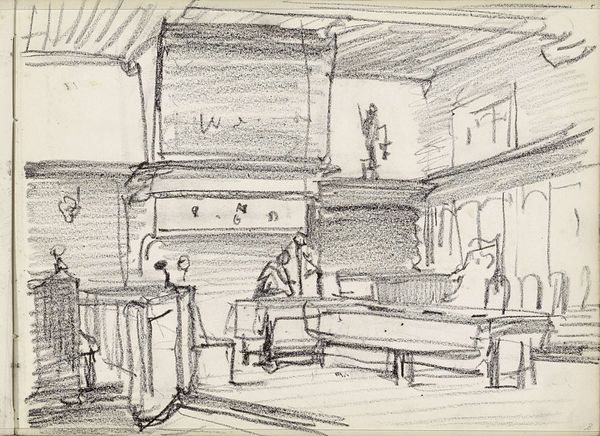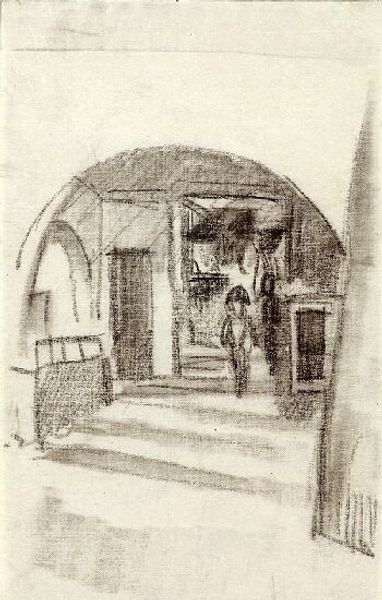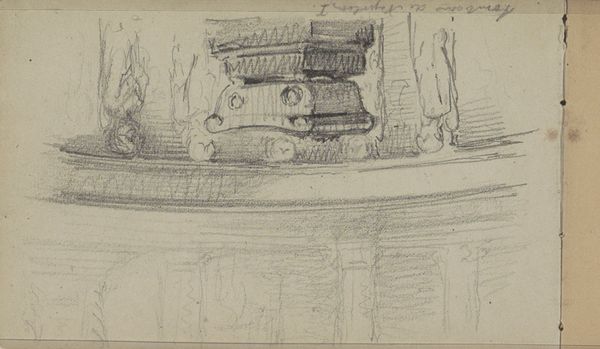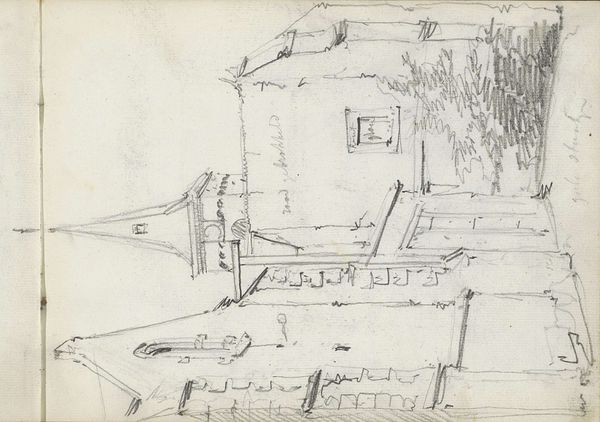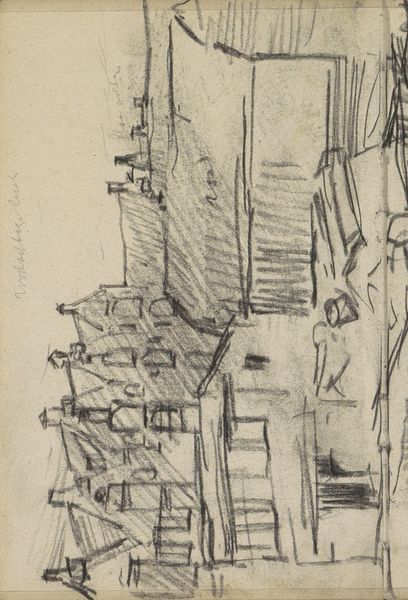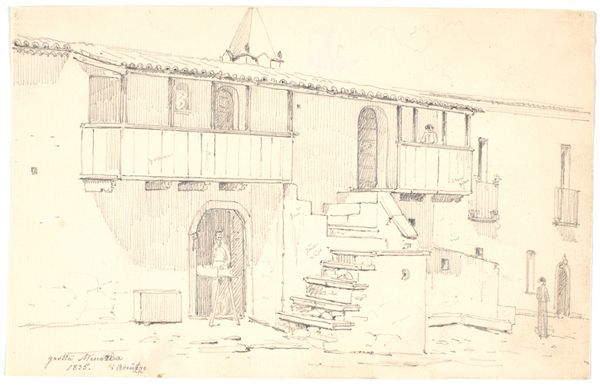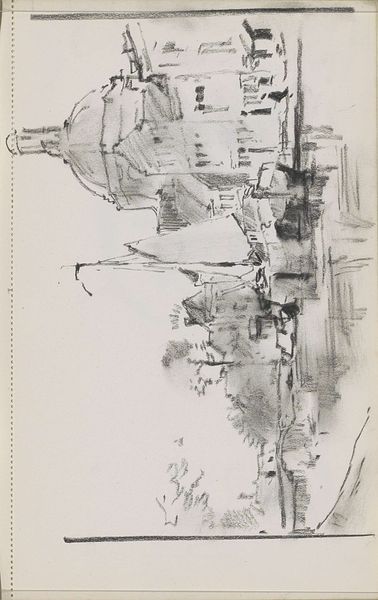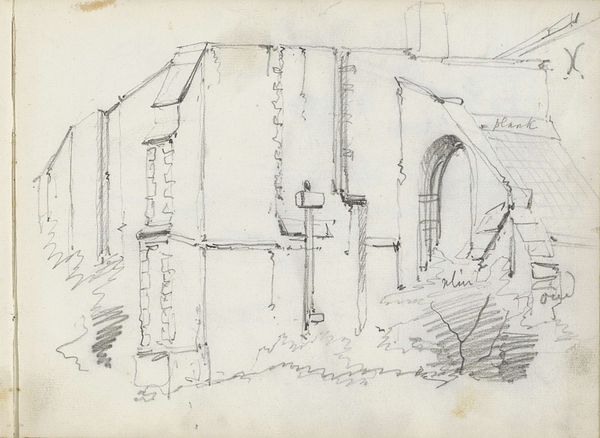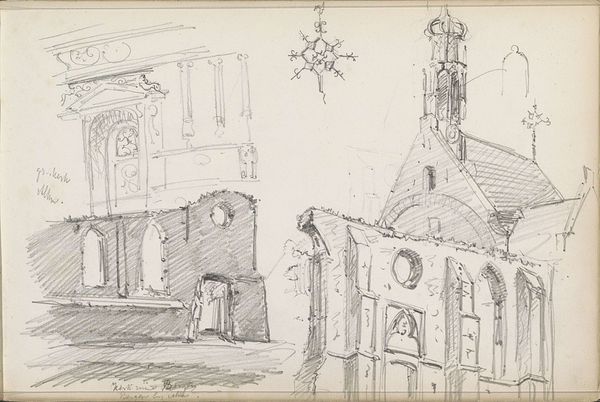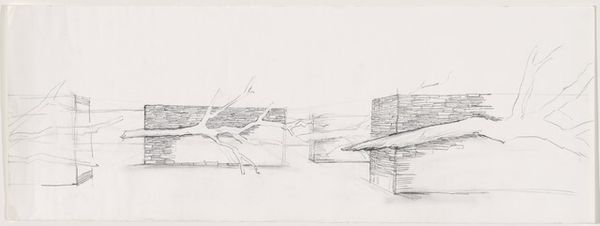
drawing, pencil
#
architectural sketch
#
drawing
#
medieval
#
form
#
pencil
#
line
Copyright: Public domain
Editor: This is Nicholas Roerich's "Scenery sketch for Mussorgsky's opera 'Khovanshchina'," created in 1919. It’s a pencil drawing, and I’m struck by its starkness. It feels very raw, almost like an immediate record of an idea. What do you see in this piece? Curator: It’s a study in the materiality of theatre design. Roerich isn't just representing architecture; he’s exploring the processes of creating atmosphere for an opera. Consider the raw pencil lines: they’re not trying to hide their hand-made quality, are they? Think about how the sketched lines speak to a production process, revealing the labour and decision-making in creating a stage set. Editor: I see what you mean about the handmade quality. The sketchiness makes it feel very process-oriented. Curator: Exactly! And we must consider that 'Khovanshchina' focuses on societal upheaval. Does Roerich's skeletal rendition hint at instability or revolution even in set design? The rapid sketch becomes more than just prep; it embodies cultural tensions within Russia, using accessible material to question boundaries between "high art" opera and real world experiences of material limitations. Editor: That's interesting - linking the material quality to the opera’s themes. It gives new depth. Curator: How do these sparse materials differ from say, painting a grand historical scene? The material choice challenges expected opulence of opera production; inviting discourse around resource use itself, especially important following the end of WWI and Russia's tumultuous changes. Editor: I never thought about it that way - the material itself making a statement. It really changes how I understand the piece. Curator: Indeed. It’s a valuable lens: looking beyond representation to explore how artistic production reveals social and cultural values through the work itself.
Comments
No comments
Be the first to comment and join the conversation on the ultimate creative platform.
